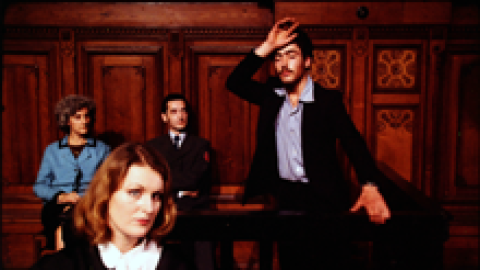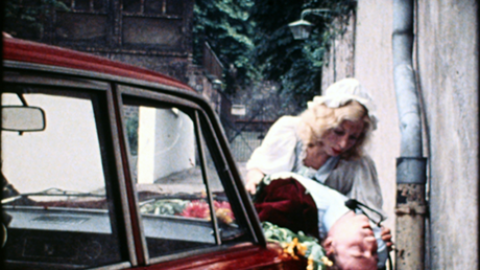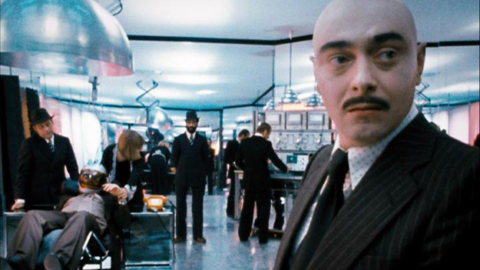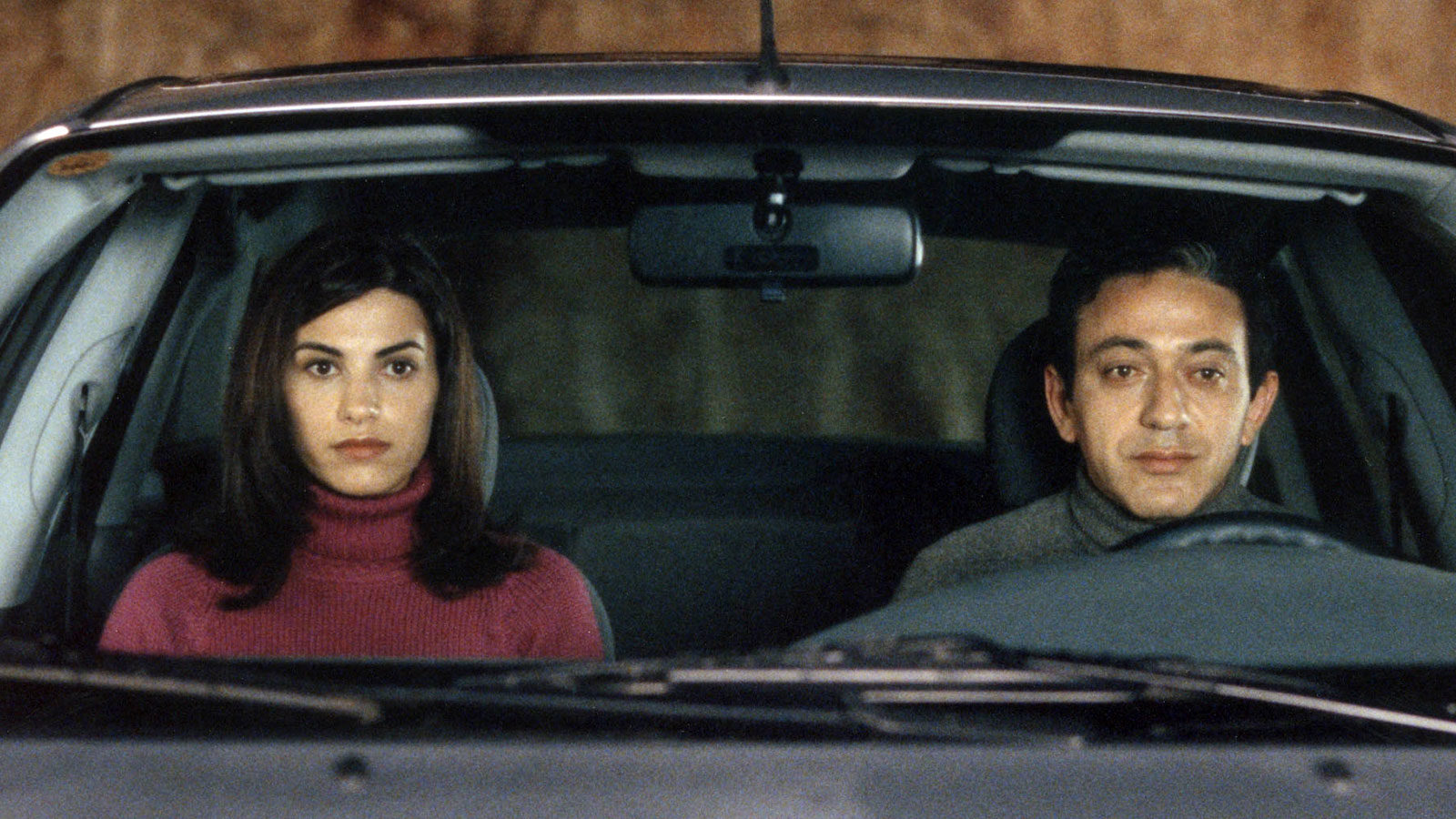
Minority Report
A man dressed as Santa Claus, a kitchen knife protruding from his chest, is chased up a desert hillside by a gang of teens. A weary-looking bourgeois drives through Nazareth, cursing under his breath as assorted pedestrians wave hello. Later he collapses in his kitchen after sorting the mail. Folks in his neighborhood blithely hurl garbage into one another’s yards and puncture soccer balls that strays onto their property. The ambient sound is usually the abrasive noise of home construction.
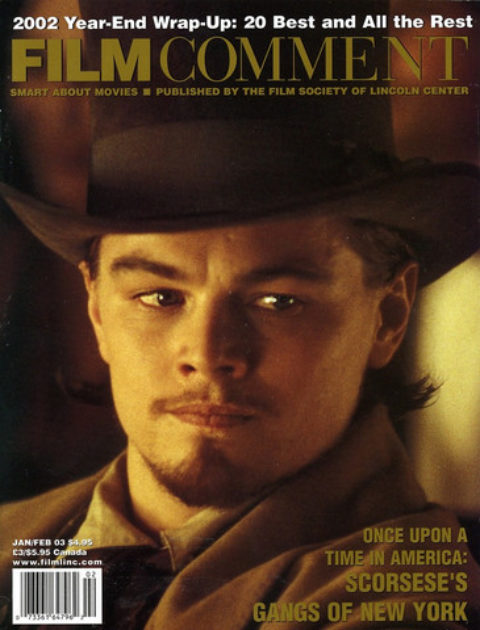
A radiant woman defiantly strides through a checkpoint on the road between Jerusalem and Ramallah, paralyzing the nervous guards, mysteriously causing the sentry tower to crash over on its stilts. Her lover, E.S., the son of the man who collapsed, casually tosses an apricot pit from his car window, causing an Israeli tank to explode.
After several meetings in a parking lot near the checkpoint, where they silently hold hands and observe the harassment of motorists by fatuous border guards, E.S. and the woman break off contact. Between their silent rendezvous, E.S. visits his father in the hospital—as elsewhere, dialogue is absent—and arranges the shots of the movie we’re watching by sorting yellow Post-Its affixed to the wall of his Jerusalem apartment.
Such are a few of the scattered, strangely affecting moments of Elia Suleiman’s Divine Intervention, a film that would seem to owe more to avant-garde choreography and the cinema of Michael Snow than to narrative film, were it not so insistently “about something” besides its structural ingenuity. Less schematic than Chronicle of a Disappearance, Suleiman’s 1996 feature. Divine Intervention is similarly focused on the corrosive impact of political instability on the social order and private life.
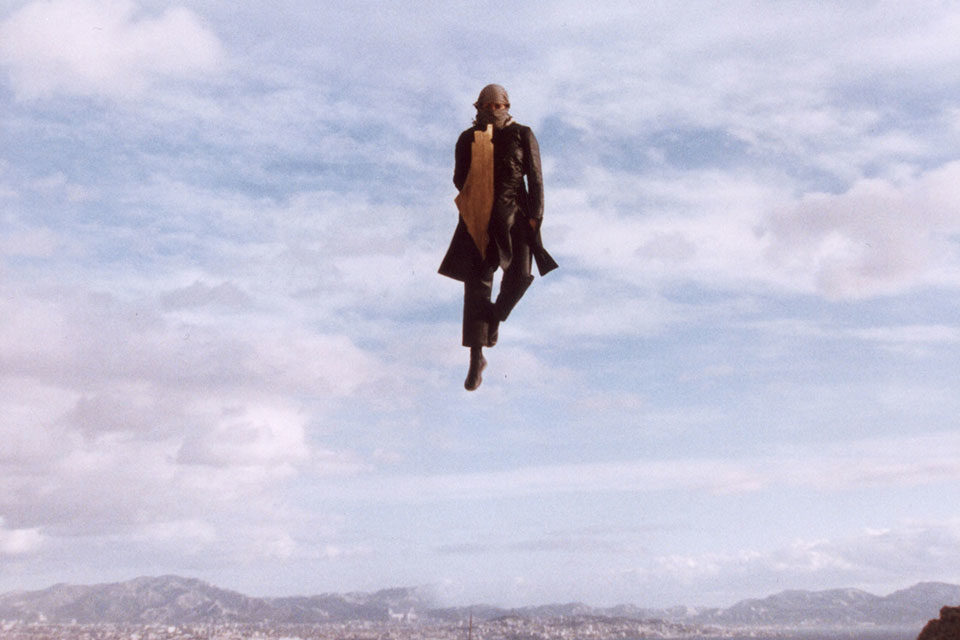
Both films convey a suffocating reality through a pastiche of styles. Routines, in the theatrical sense, repeatedly play out to reflect the hamster-in-a-wheel effect of social conditions nobody can accept and that only change for the worse. Suleiman uses the static shot as an absurdist-vaudeville proscenium, as Chantal Akerman did (with more Warholian emphasis on the protracted stare) in films like News from Home, showing figures in the landscape whose stories, for the most part, remain hidden from us: they enter, perform some physical action, in rare instances say something, and leave. Suleiman breaks up these potentially monotonous life studies with traveling shots and more intimate scrutiny of his three main players, the only figures presented in close-up, whose identities and relationships to one another are inferred through a language of gestures and glances. Stylistically speaking, the film consists, to use the director’s word, of “stutters.” At certain moments, it even parodies the techniques of TV commercials and martial arts epics.
The consistent element is mood rather than style—a mood that might be described as fitfully restive sadness, flecked with sly gallows humor and fantasies of retaliation. The film maintains an insistent emotional charge that avoids melodrama and sentimentality by trimming vignettes to their essential action (the peeling of a hard-boiled egg dictates the length of one hospital scene), and by the ambiguity of silence in narrative space.
Suleiman has almost certainly never seen Werner Schroeter’s movies, but his two features to date bear a rough family resemblance to Schroeter’s Eika Katappa, The Bomberpilot, and The Death of Maria Malibran, films in which several stories (and/or themes, compositional tropes, favorite epigrams) loop in and out of view according to some private, musical logic. “Never explain, never apologize” could be the presiding dictum. The viewer may get lost for a while, but not unhappily. In Schroeter’s case, the operatic gorgeousness and absurdity of the image holds our attention, while with Suleiman the subject (a kind of metaphoric map of Palestine) has an intrinsic fascination. Even when we’re seeing very little, it’s more than most of us know of the territory. Suleiman’s landscapes aren’t necessarily beautiful, but the camera fixe lends this film’s more ponderously fallow moments the gravy of anticipation.
Reviewers have been quick to note the mournfully Keatonesque visage of the director, the surprising use of slapstick, and other broad comic touches. Discussion of the film’s politics has been generally perfunctory. Yet there is obviously something volatile in the mere fact of an “art” film with a Palestinian viewpoint—so much so that certain international festivals that have included Suleiman’s film have felt it necessary to invite at least one Israeli film, of whatever quality, to “balance” it.
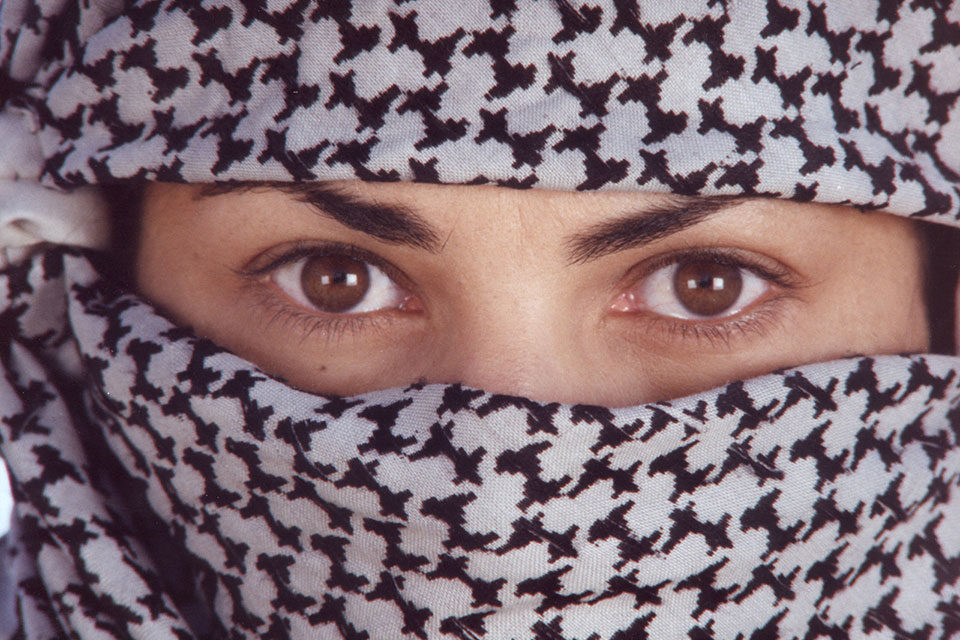
“There were many preconceptions about this film,” the director told me after Divine Intervention screened at the New York Film Festival. “What would a Palestinian film look like? Why would it have humor in it? It wasn’t anticipated. The poetic space in the film wasn’t expected either. Because she liked the film a lot, someone from a liberal Zionist background, in order to make me kosher, said, ‘Well, it’s also critical of Palestinians.’ Which isn’t true. It’s not critical of Palestinians at all. The first segment, if that’s what she meant, is much more violent, in some respects, concerning what Israel has done to the Palestinians, by making them live in such a vicious circle, the ghetto. But if people need to find a way to justify liking the film, that’s okay. If at this moment in history they want to do that, it’s okay.”
Suleiman arrived at filmmaking, as many do, out of a more general search for an expressive medium, and frustration.
“I read about films before I saw that many. I started by reading filmmakers talking about their work. My desire wasn’t to learn film but to learn the kind of resistant discourse these filmmakers acquired through their work. When I read Godard, I didn’t know his work at all. I was just fascinated by his politicization vis-a-vis narrative structure. I read all these cinema books because I was so marginalized when I was young, and didn’t have any cultural background at all. But I had a very intuitive sense about classical narrative structures—that 1 was completely repulsed by them. Especially regarding films that talked about Palestine and had these Hollywood narratives full of preconceptions and stereotypes—positive ones, in fact, that were trying to “humanize” the Palestinians, which I found a sort of positive racism, like Costa-Gavras’s Hanna K. When I was young, these kinds of film came to town, and I didn’t know how to deal with them.
“I was introduced to the work of Jacques Tati and Buster Keaton during the shooting of my first feature, so I can say I’ve never been influenced by these guys. When I started. I had no notion of why I needed to be acting in front of the camera. In retrospect, this kind of striptease is becoming a style. But I began with more conceptual ideas, about what it means to have a camera move, or have a static shot. Not exactly an ideological position, but a dependency on the idea that a static camera would get me a lot closer to myself. This is no longer a question for me. In this film you see a half hour of minimalism, but then a lot of choreography. And an appropriation of commercials, where the woman walks up to the checkpoint.
“Maybe this inconsistency of style is my style. Maybe that has to do with the nomadic existence I’ve lived. I’m a bit of a chameleon, a Zelig.”
For the record. Elia Suleiman looks a lot more youthful and energized “in real life” than his poker-faced screen counterpart. I’m not sure why. His conversation is vivid and wildly digressive. When I meet him, a slogan from a recent Israeli gay rights demonstration has captured his attention: FREE CONDOMS FREE PALESTINE. Suleiman relates, with relish, how a gay Palestinian friend passes as “Western” by speaking English at the door of Israeli nightclubs; once inside, the friend becomes Palestinian again, and much desired as “an exotic Other.”
“It would be intriguing to check how liberal or political that tendency is,” Suleiman said. “When you see a slogan like this, at least in its poetic license, if there can be any true political consciousness inside Israel, it’s via such movements and oppressed groups. The Peace Now people—their solution is ’67 borders, the two-state solution, which means giving the Palestinians a state: ‘Give them what they want so they don’t come in and bomb themselves.’ A gay movement is obviously coming from elsewhere—there’s nothing Zionist about it. And there’s no real alliance between them and any gay Palestinian movement, since none exists. So they must’ve felt the scars on their skin that the Palestinians feel on theirs. It doesn’t have to be real scars. They just have to do a comparative history of how the Palestinians are treated and how they’re treated.
To continue reading, purchase this issue.



